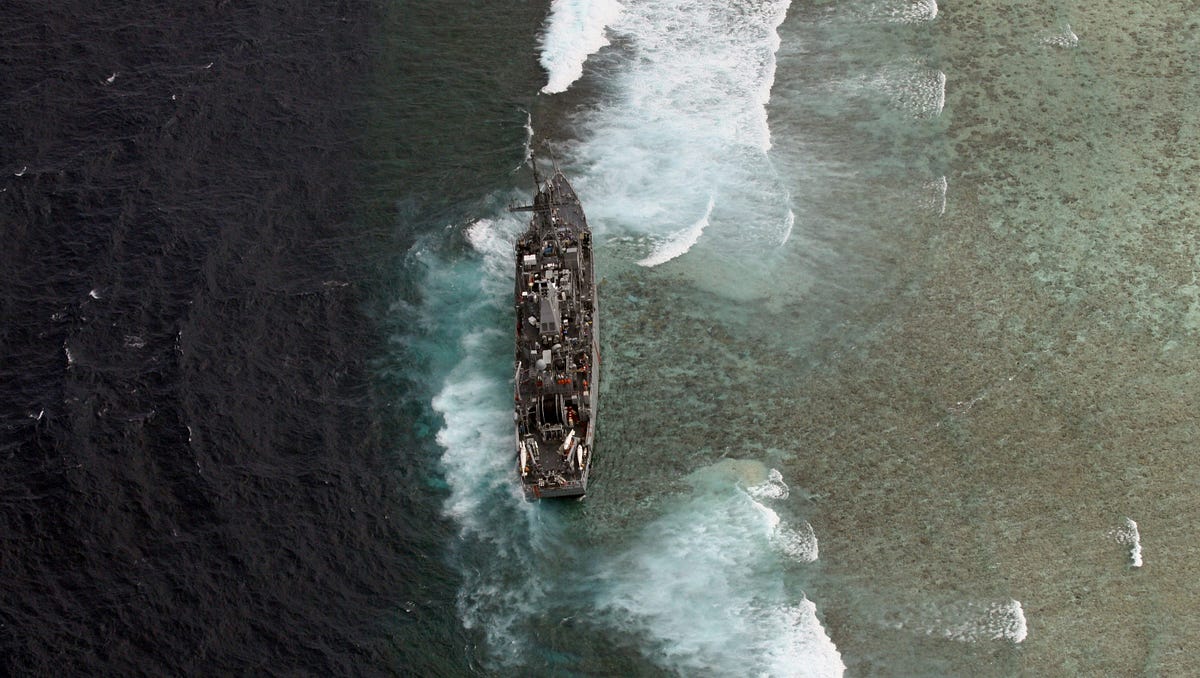The recent incident where the Philippines accused China of seizing air-dropped supplies destined for its outpost in the South China Sea has once again thrust the region into the global spotlight. This latest escalation is a stark reminder of the simmering tensions and complex geopolitical dynamics at play in one of the world’s most contested maritime domains.
The South China Sea, a strategic waterway that serves as a vital artery for global trade, has long been a flashpoint for territorial disputes. China’s expansive claims, embodied by the controversial “Nine-Dash Line,” have put it at odds with several Southeast Asian nations, including the Philippines, Vietnam, Malaysia, and Brunei.
Historical Claims and Legal Battles
The roots of the current conflict can be traced back to competing historical claims and differing interpretations of international law. In 2016, the Permanent Court of Arbitration in The Hague dealt a significant blow to China’s territorial ambitions, ruling that its claims in the South China Sea had no legal basis under the United Nations Convention on the Law of the Sea (UNCLOS).
However, China swiftly rejected the ruling, dismissing it as “null and void” and continuing its assertive actions in the region. This defiance has not only undermined the authority of international legal institutions but also set a concerning precedent for the resolution of maritime disputes.
It’s crucial to note that China’s historical claims are rooted in ancient maps and records, which they argue predate the modern international laws governing maritime boundaries. The juxtaposition of historical grievances against contemporary legal frameworks poses a significant challenge to resolving these disputes.
Strategic Significance and Geopolitical Implications
The Spratly Islands, where the recent incident occurred, are a strategic linchpin in the South China Sea. These islands, reefs, and atolls are not only rich in natural resources but also serve as crucial maritime chokepoints, controlling access to vital sea lanes.
The presence of the BRP Sierra Madre, an old Philippine warship purposefully grounded on the Second Thomas Shoal in 1999, serves as a symbolic assertion of the Philippines’ territorial claims. China’s aggressive actions to prevent the resupplying of the small contingent of marines stationed aboard the vessel underscore the high stakes involved.
The escalating tensions in the South China Sea have far-reaching geopolitical implications that extend beyond the immediate parties involved. The United States, a treaty ally of the Philippines, has a vested interest in maintaining freedom of navigation and upholding the rules-based international order. Any conflict in the region could potentially draw in global powers, risking a broader conflagration.
Moreover, the region’s strategic significance is further amplified by its role as a nexus for great power competition. As China continues to build artificial islands and install military infrastructure, it aims to project power and assert control, effectively challenging U.S. naval dominance in the Western Pacific.
Quantifying the Economic Impact
The economic ramifications of a potential conflict in the South China Sea cannot be understated. Approximately one-third of global shipping, valued at an estimated $3.4 trillion annually, passes through these waters. Disruptions to this vital trade route could have severe consequences for global supply chains and economic stability.
Furthermore, the South China Sea is believed to hold vast reserves of oil and natural gas, making control over these resources a strategic imperative for energy-hungry nations. Any escalation of tensions could jeopardize access to these valuable resources, exacerbating energy insecurity and fueling further conflicts.
Beyond the immediate economic impacts, the long-term repercussions for global trade and investment could be profound. Companies and policymakers would need to reassess risk and re-route trade flows, leading to increased costs and inefficiencies in global supply chains.
A Delicate Balancing Act
As the situation in the South China Sea continues to unfold, all parties involved must tread carefully to avoid miscalculation or unintended escalation. The Philippines, while asserting its territorial claims, must navigate the delicate balance between defending its national interests and avoiding an outright confrontation with a militarily superior China.
China, on the other hand, must weigh the potential consequences of its aggressive actions against the perceived benefits of asserting dominance in the region. Any misstep or overreach could not only undermine its global standing but also risk drawing in other regional powers and global actors, further complicating the already intricate web of alliances and strategic interests.
Moreover, there is an urgent need for a coherent strategy from ASEAN nations as they collectively seek to counterbalance China’s maritime assertiveness. This requires a unified diplomatic front, bolstered defense coordination, and strategic partnerships with extra-regional powers like the U.S., India, Japan, and Australia.
A Call for Diplomacy and Restraint
As tensions continue to simmer, the international community must redouble its efforts to promote diplomacy and restraint. Regional organizations like the Association of Southeast Asian Nations (ASEAN) have a crucial role to play in facilitating dialogue and finding a peaceful resolution to the disputes.
Furthermore, the United States and its allies must carefully calibrate their responses, balancing the need to uphold international law and freedom of navigation with the imperative to avoid escalating the situation into a full-blown conflict.
The recent incident in the South China Sea serves as a stark reminder of the fragility of the current geopolitical landscape and the potential for miscalculation. It is incumbent upon all parties involved to exercise restraint, engage in meaningful dialogue, and seek a peaceful resolution that respects the principles of international law and the sovereignty of all nations.
As the world watches with bated breath, the South China Sea remains a looming flashpoint for conflict, a crucible in which the future of the global order and the stability of the Indo-Pacific region will be tested.

